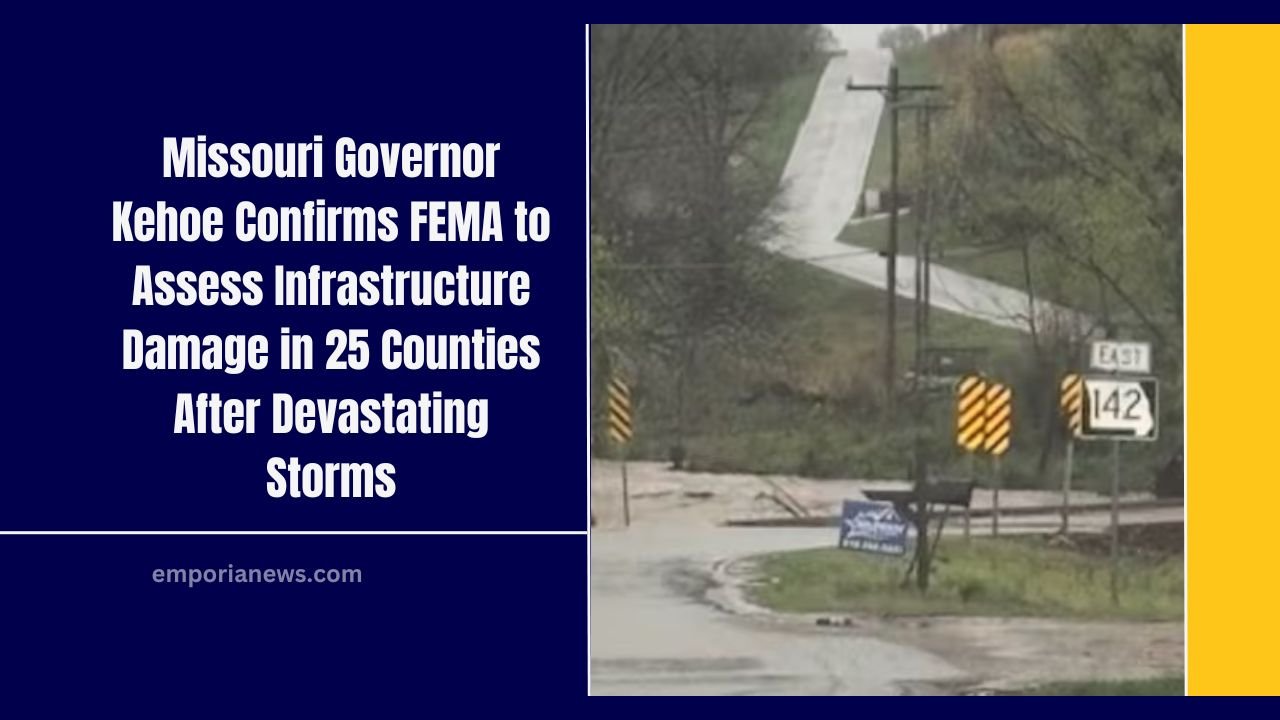In response to the severe storms and widespread flooding that struck Missouri beginning March 30, Governor Mike Kehoe has announced that the Federal Emergency Management Agency (FEMA) will conduct joint Preliminary Damage Assessments (PDAs) in 25 counties across the state.
The goal is to evaluate the extensive impact on public infrastructure, including roads, bridges, and water crossings, in hopes of securing federal Public Assistance.
Unprecedented Damage Triggers Federal Action
Missouri has been grappling with relentless storms and flash flooding that disrupted communities, caused property damage, and severely impacted transportation infrastructure.
Although local and state public works departments have made commendable efforts in reopening damaged roads and conducting temporary repairs, the scale of the destruction demands federal disaster relief.
According to Governor Kehoe, “Our teams have been working tirelessly, but federal help is essential to meet the overwhelming recovery needs.”
Counties Under FEMA Assessment
Joint PDAs will begin on Tuesday, April 22, with teams composed of representatives from FEMA, the State Emergency Management Agency (SEMA), and local emergency management officials.
The assessments will help determine eligibility for Public Assistance grants, which can reimburse local governments and nonprofits for expenses related to emergency response, infrastructure repair, and disaster recovery.
Here is the list of counties currently under evaluation:
| Counties Under FEMA Joint PDA |
|---|
| Bollinger |
| Butler |
| Cape Girardeau |
| Carter |
| Cooper |
| Douglas |
| Dunklin |
| Howell |
| Iron |
| Madison |
| Maries |
| Mississippi |
| New Madrid |
| Oregon |
| Ozark |
| Pemiscot |
| Reynolds |
| Ripley |
| Scott |
| Shannon |
| Stoddard |
| Texas |
| Vernon |
| Wayne |
| Webster |
More counties may be added as local reports continue to come in.
Federal Assistance Categories
Two types of federal assistance are being addressed:
- Public Assistance (PA): For infrastructure repair and emergency response cost reimbursements for government entities and eligible non-profits.
- Individual Assistance (IA): For residents to obtain temporary housing, home repairs, replacement of essential belongings, and other qualified expenses.
Simultaneously, assessments for Individual Assistance began this week, allowing affected residents to apply for personal disaster recovery aid.
Support for Missouri’s Agricultural Sector
To extend help to farmers and ranchers, Governor Kehoe has submitted a formal request to the U.S. Department of Agriculture, asking the Missouri Farm Service Agency to conduct agricultural damage evaluations.
This step ensures that rural communities and agricultural producers are included in the federal recovery framework.
Executive Action and Ongoing Relief Operations
Governor Kehoe has also signed Executive Order 25-22, which extends three prior orders to May 14, 2025. This extension allows Missouri state resources to continue supporting storm-impacted regions without interruption.
Meanwhile, SEMA remains actively engaged in coordinating clean-up and recovery efforts alongside volunteers, local governments, and faith-based organizations.
How Missourians Can Help or Seek Help
Residents with property damage are urged to:
- Contact insurance companies promptly
- File claims without delay
- Visit recovery.mo.gov for guidance on clean-up, temporary housing, and mental health support
Those wishing to donate should direct financial contributions to trusted disaster relief organizations, as monetary donations provide the fastest, most flexible form of support.
For individuals with unmet needs:
- Dial 211 to reach United Way
- Call 1-800-733-2767 to connect with the American Red Cross
With Missouri’s infrastructure strained under the pressure of natural disasters, FEMA’s intervention is a crucial step toward restoring critical services.
The partnership between state and federal agencies, supported by community efforts, aims to rebuild and strengthen Missouri’s resilience.
As assessments continue, both residents and local governments are urged to document damage, report needs, and prepare for the next phase of the recovery process.




